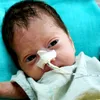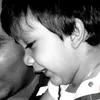[Rare Disease Day] Health advocacy groups press for government policy, say India's numbers unknown
The 450 kinds of rare diseases recognised in India were identified because patients reported them. The government has not issued an official list of identified rare diseases.
Only 450 of the 8,000 known rare diseases in the world are recognised in India, an anomaly that underscores a mounting health crisis in which many patients go without being diagnosed accurately or treated on time, say experts while stressing the urgent need for a comprehensive policy.
Rare diseases, including genetic disorders such as Hunter syndrome, Gaucher disease and Fabry's disease, are expensive to treat, difficult to identify, and extract a huge toll, mostly on the young, the experts said ahead of Rare Disease Day on Sunday.
The lack of a government policy also means the disease burden is unknown, said health advocacy groups.
"We are literally sitting on a ticking time bomb," said Prasanna Shirol, executive director and co-founder of the Organisation of Rare Diseases in India (ORDI).
According to ORDI, there are 8,000 known rare diseases globally, but only 450 are recognised in India.
There is no official list of identified rare diseases issued by the government. The 450 diseases identified are reported by the patients. Around 50 percent of the rare diseases are by birth, and the rest are late onset. Only seven of the 450 are treatable diseases, the rest need to be managed, Shirol told PTI.
Lack of awareness is the biggest challenge in diagnosing rare diseases, he said, explaining that the average time to identify a rare disease in a patient is seven years.
"While the government has earmarked special funds for diseases such as haemophilia (Rs 1,400 crore per year) and thalassaemia (Rs 700 crore), it has completely ignored the more serious ones," he said.
"What the government believes is utterly contradictory. They ask why should they initiate anything massive for a group which does not have a massive patient burden unlike non-communicable diseases like cancers, but what I say is that to know the real burden it has to make newborn screening mandatory," Shirol told PTI.
Shirol, who has a daughter with a genetic disorder, said a policy from the government can bring some order to the lives of people with such conditions in the country.
"It appears hope is the only medicine government is trying to give us for our genuine demands," he said.
While there is no formal definition for a rare disease, global health bodies say it is characterised by three factors - the total number of people having the disease, its prevalence, and the non-availability of treatment.
According to the website rarediseaseday.org, 72 percent of rare diseases are genetic, whilst others are the result of infections (bacterial or viral), allergies and environmental causes, or are degenerative and proliferative. An estimated 70 percent of genetic rare diseases start in childhood.
Health groups in India have also urged the government to make newborn screening mandatory to be able to identify genetical problems at an early stage. The monthly treatment cost of such diseases can be anywhere between Rs 10 lakh and Rs 50 lakh, they said.
Rare diseases are also not covered by insurance policies. It is imperative the government steps in to help these patients so they can lead a near normal life, they said.
There are over 3,000 registered patients with ORDI but there are many more who are not registered anywhere. Lack of awareness among people, and lack of expertise in the medical fraternity leads to hugely delayed diagnosis. Estimates show it takes almost seven years to diagnose a rare disease in a patient.
The government has said it will finalise a rare disease policy by March 31 this year, Shirol said. But such assurances have been given about five times earlier, and nothing has happened, he added.
Dipanjana Datta, a medical geneticist from West Bengal who is the state coordinator for ORDI in the state, said a slew of things will become clear only when the government comes up with the long discussed policy.
"Problems of patients with rare diseases are different. Forget about making newborn screening mandatory, we don't have basic infrastructure in the country where such patients can receive treatment. Almost every patient of rare diseases in rural places has to travel 200-300 km for basic treatment. We want it to be reduced to at least 70 km," Datta, who is also associated with Institute of Child Health in Kolkata, told PTI.
Around 80 percent of rare diseases have identifiable genetic origin, and 30 percent of the patients die before reaching the age of five.
At present, only a few government hospitals such as Delhi's All India Institute of Medical Sciences, and Chandigarh's Post Graduate Institute of Medical Education and Research, and some private hospitals have the facility for newborn screening tests. This makes it unaffordable for low-income group families.
In 2017, the National Policy for Treatment of Rare Diseases (NPTRD) was announced by the Indian government with a corpus of Rs 100 crore to provide financial assistance for the treatment of rare disease patients.
However, in November 2018, the health ministry put on hold the policy and the corpus amount, saying the focus was currently on communicable and non-communicable diseases.
Ashok Gupta, a geneticist at Jaipur's Sawai Man Singh Medical College, is of the opinion that there are no set standards for medical treatment or even awareness about the disease in India.
"Government's policy is a must and that would pave a new path for the society and the patients with the disease. Currently, 95 percent of the people can't even define rare diseases," Gupta said.
Gaucher disease has varying degrees of abdominal complaints, skeletal abnormalities and blood disorder. In Hunter disease, there is a massive buildup of harmful substances that eventually causes permanent, progressive damage in terms of mobility. In Fabry's disease, there is a formation of several dark small, painful spots in the body causing hearing loss and heart attacks.
Edited by Anju Narayanan

![[Rare Disease Day] Health advocacy groups press for government policy, say India's numbers unknown](https://images.yourstory.com/cs/5/211ccaf00e6d11e997fe8f165dce9bb1/Image8fjb-1614433426600.jpg?mode=crop&crop=faces&ar=2%3A1&format=auto&w=1920&q=75)







